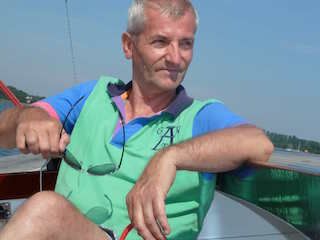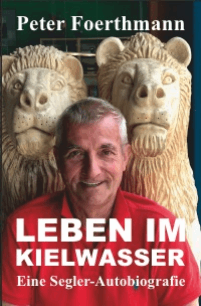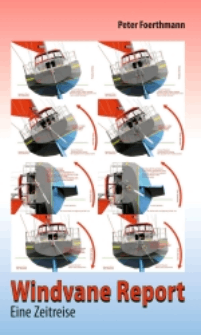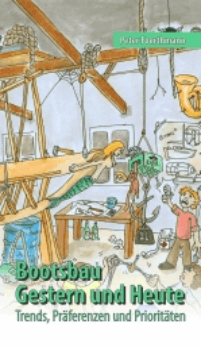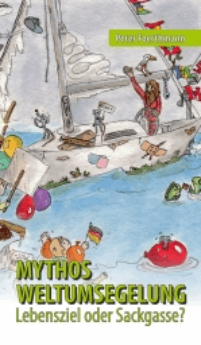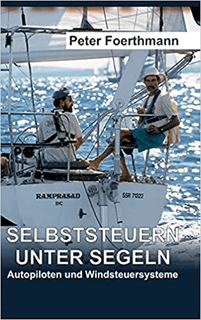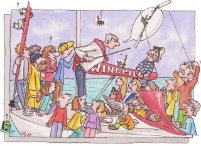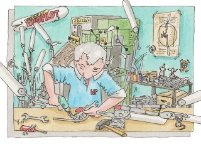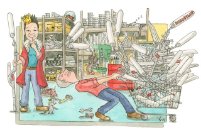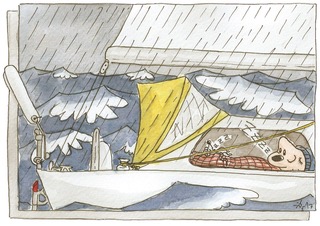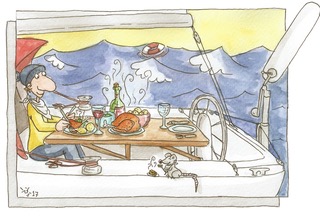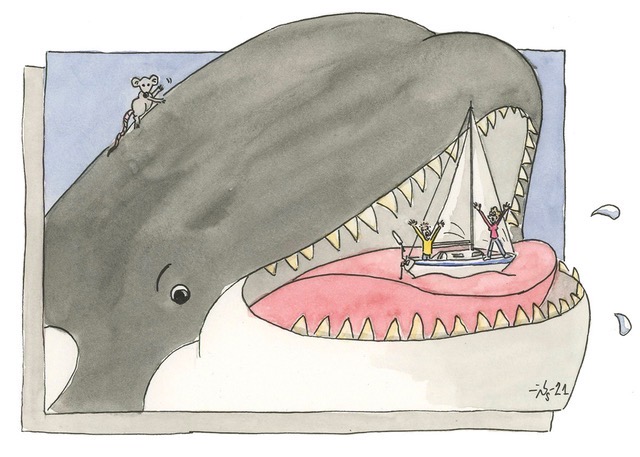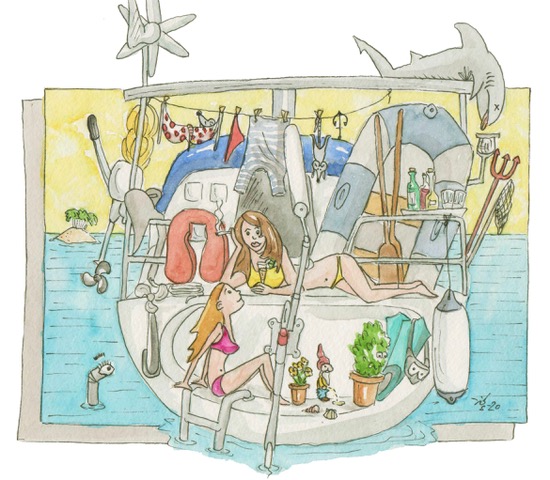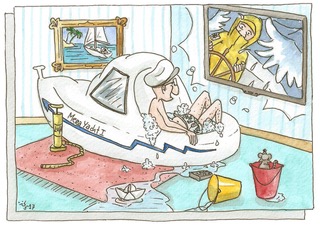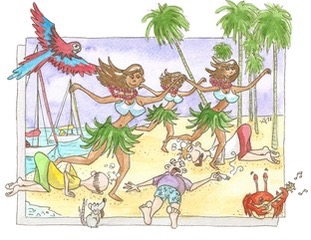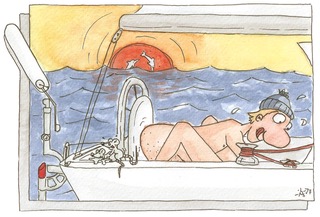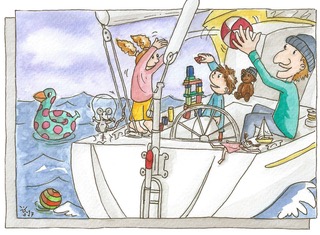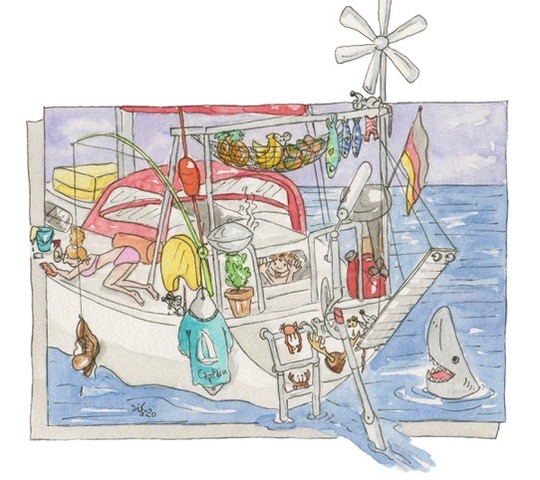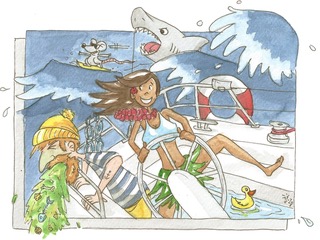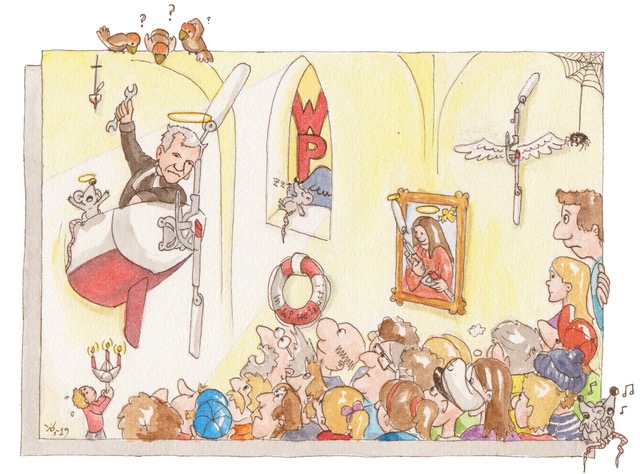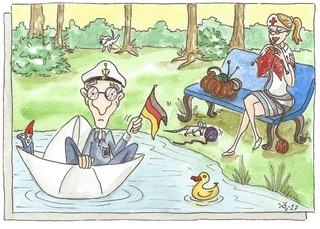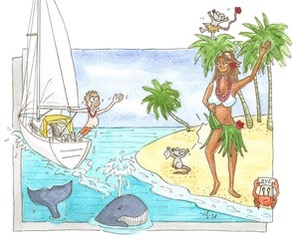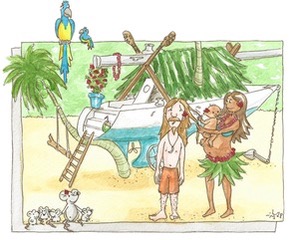EIN GROSSES LEBEN MIT KLEINEM BUDGET
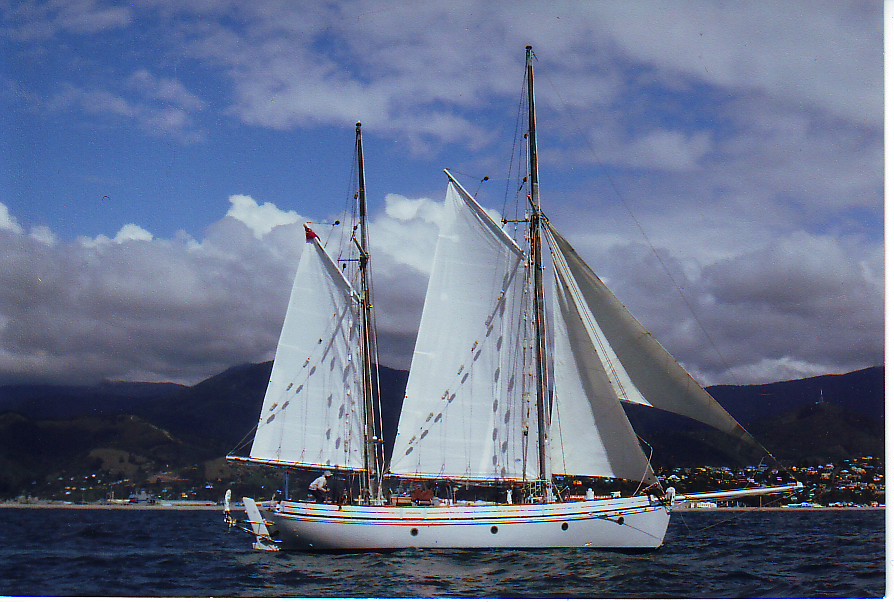
Es ist erst einige Wochen her, als mich folgende Mail erreichte:
Good Morning Peter,
I have had a ‚Pacific‘ for many years and it continues to work to perfection. It has, however, a small problem – the sun has broken down the surface of the worm wheel and the worm no longer engages properly with the wheel. I would like a replacement for both worm and wheel if it is a direct replacement. I do have an alternative ‚plan‘ but would rather keep to the original.My ‚Pacific‘ is now about 18 years old ( you took a photograph of ‚Irene’s windpilot when we were in the Canaries and kindly left a copy of his book ), and has been invaluable for steering ‚Irene‘ on her short handed extended cruise.
Thank you for any help you can give me.
Dick Morris
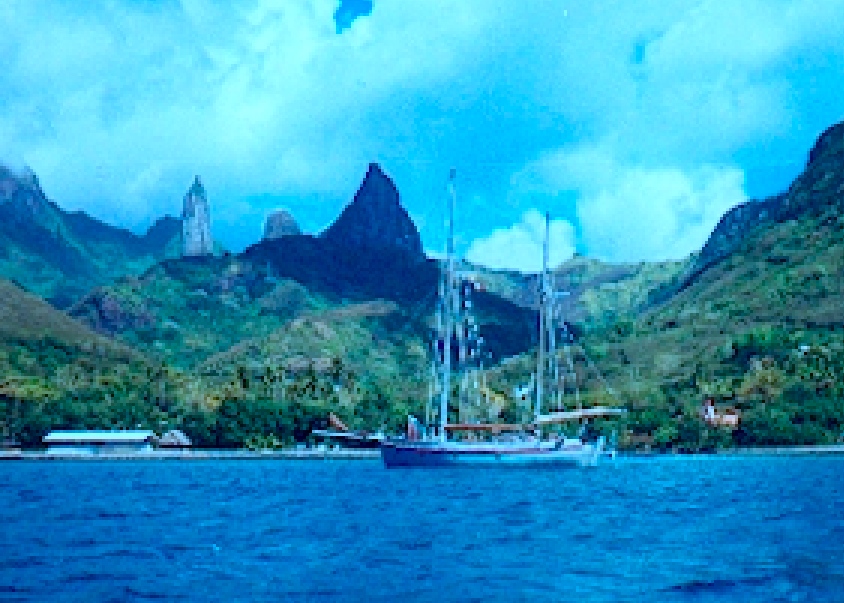
Ich sah sofort das Bild der SV IRENE vor mir, ein Schiff, ein Schwergewicht, eine Herausforderung, die mir vor 20 Jahren Respekt einflösste: 30 Tonnen, mit voller Ausrüstung wahrscheinlich noch ein paar Gramm mehr – welcher Schiffseigner kennt denn schon das wahre Gewicht seiner Yacht, solange er sie nicht selbst gewogen hat? Zumal Schiffe stets die Eigenschaft besitzen, in ihren unergründlichen Tiefen ungeahnte Mengen an Ausrüstung und Ersatzteilen, zu sammeln und zu verbergen, die man erst bemerkt, wenn der Travellift wg. Überlast zum Stehen kommt, oder der Kranwagen ins Hafenwasser kippt. Jedenfalls hatte ich Pat und Dick seinerzeit auf der London Boat Show die PACIFIC mit der Zusicherung verkauft: in case the unit might not perform your boat, I will take her back and reimburse your payment. Auf diese Weise habe ich mich im Verlauf von 40 Jahren immer weiter an die Grenzen der Leistungsfähigkeit meiner Systeme herangetastet. Try and Error – zurücknehmen musste ich nie. So sah ich vor einigen Jahren auf dem Cover Foto der norwegischen SAILAS den NEUBAU einer gewaltigen COLIN ARCHER – in Norwegen aus Teak Holz gebaut, was allein eine teure Sensation – mit einem Gewicht im Bereich von 40 – 50 Tonnen – am Heck eine rührend klein erscheinende PACIFIC, die der Eigner / Bauherr des Schiffes von seinem vorherigen COLIN ARCHER demontiert und einfach ans Heck seines Neubau´s montiert hatte. Wie zu hören war, mit besten Erfolgen. I live and learn – dieser Spruch gilt in allen Wirtschaftszweigen. Aber auch die 50 Tonnen Marke wurde später gerissen, denn die SV Wynard, ein Zweimast Schoner segelt seit Jahrzehnten mit einer zierlichen Heckverzierung aus meinen Stall.
Weil Neugierde mein zweiter Vorname ist, entspann sich in den Wochen nach Dick´s Kontakt aus Nelson, New Zealand, ein höchst interessanter Mailwechsel, in dessen Verlauf ich die ungewöhnliche Geschichte von Pat und Dick – und ihrem schwimmenden Zuhause – erfahren konnte. Eine Geschichte, die Mut machen sollte, wenn es darum geht, eigene Träume in gelebtes Leben zu transformieren, ohne ständig den Mangel an finanziellen Mitteln in den Mittelpunkt aller Überlegungen zu stellen, oder gar als Ausflucht zu strapazieren, warum man – leider leider – nicht hat weiter segeln können, weil die Knete nicht mehr gereicht.
Mein Herz gehört stets den stillen Helden, die ihren Lebensweg in gerader Furche gehen, ohne stets und ständig Misserfolge oder Niederlagen dafür verantwortlich zu machen suchen, anstatt Eigenverantwortlichkeit zu verstehen und zu sehen.
Hier ist ein interessantes Interview
Hier mein Schriftwechsel mit Dick:
Hi Peter,
thanks again – any details that you want are for the asking – anything that can encourage people, who may be of ’slender means‘, that cruising is not the sole prerogative of the wealthy. Cruising can still be done on a small budget if as much of the work is done by your own hands and a few sacrifices are made. ‚Irene‘ has no radar, no fridge, or freezer, no water maker, no bow thruster, a hand wound anchor winch, and only a relatively small engine ( seventy horsepower ) for her 30 ton displacement. Not only have I not had to buy all those wonderful ‚Gadgets‘ ( now wide promoted as ‚essential‘ ), I have not had to fit them and then take them out to pay for repairs. We had one disastrous engine re-build in the U.S. and had to have it done again later – but, as we have been away from ‚civilisation‘ for over 17 years now I suppose that is not so bad.I still say the best bit of equipment we have is the Windpilot – no wires, no amps, no volts, no ohms and no trouble – such small spares as we have needed have been supplied quickly and easily – wish I could say the same for other things that we have had to have mailed to us.
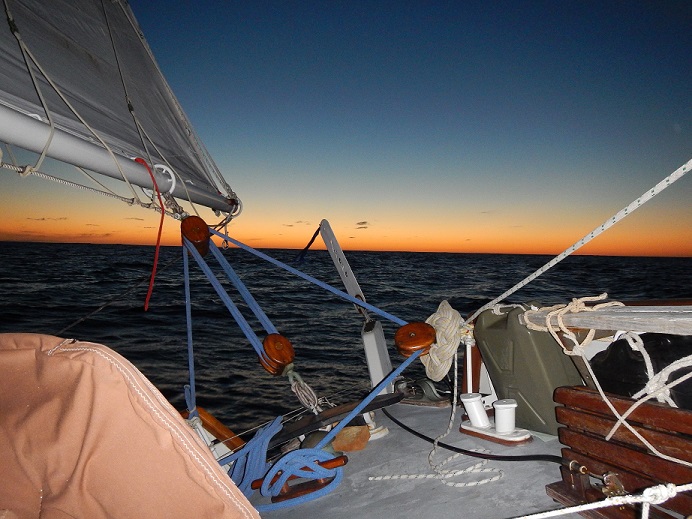
LIFE TIME BOATAHOLIC
I am a lifetime ‚Boataholic‘ of the Keep It Simple background where all must be done at minimum cost with simple tools as any other way is too expensive.
I started working life in engineering – tool making, then instrument making ( I have two sextants ( that I made for myself while working for Kelvin Hughes ). I then took up development estimating for production costs – each job interrupted with sailing breaks of a few months to a couple of years.
You are quite right – engineering ( and the dirty hands that go with it ), are a root of your being and the building and/ running of a simple vessel on a very small budget brings continuous challenges.
CONCRETING OF A BOAT
‚Irene‘ is a ferro-cement Colin Archer type gaff ketch. The design was adapted by J. Benford – some of his ‚mistakes‘ giving some trouble as I did not discover them ( quite by chance ), just before concreting day. One of these left me with no distance at all in front of the engine in stead of the 10 inches I should have had.
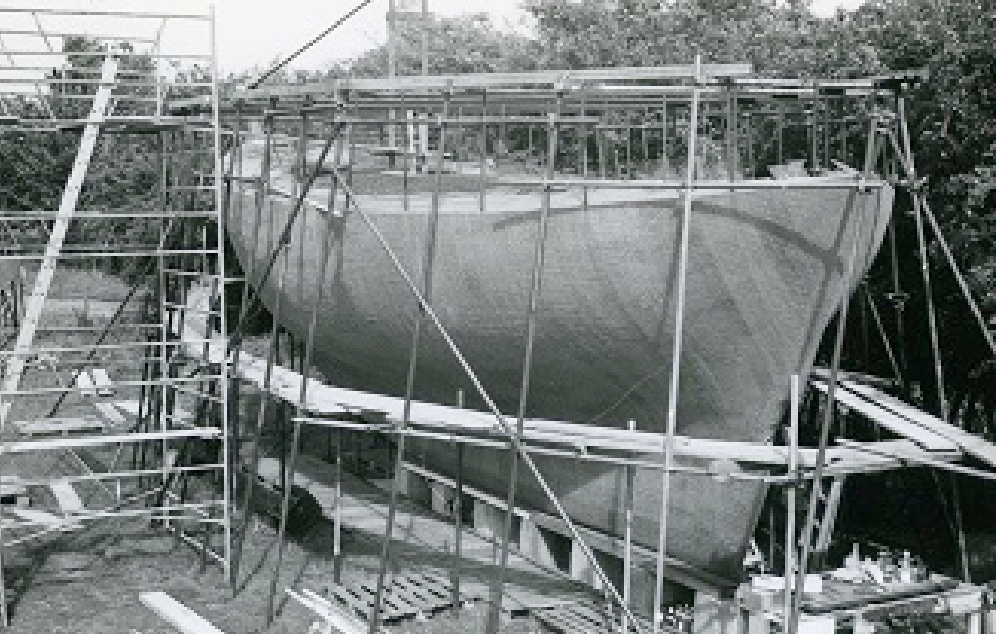
Concreting day was in 1977 and, despite promises otherwise, I was forced to move the cured hull – a diversion that was to prove a challenge – but it was done. A rebuild of a house, subsequently lost due to divorce, meant another move – it was as well that I made a good solid trailer! Then the job of rebuilding the very small cottage that I still own, and let, to finance life.
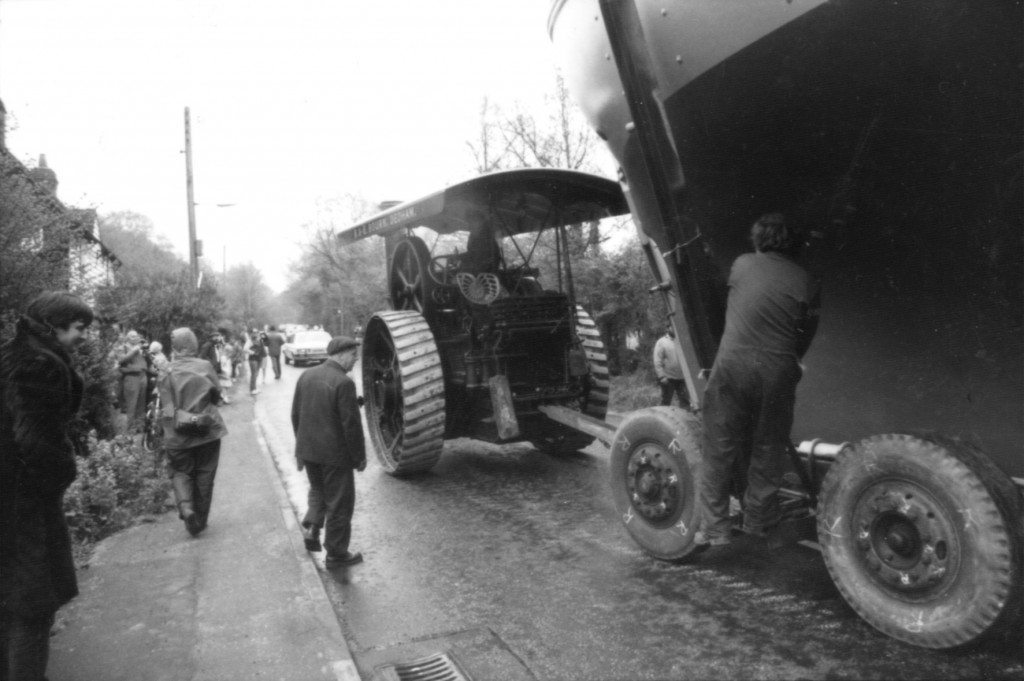
Just to add to my woes at that time the local council started to kick me out of the new site. I managed to cheat and lie for three years, ( having my workshop burnt out and lost my wooden masts that I had ‚harvested from myself from Wales ). The workshop fire destroyed all my woodworking machinery ( old gear that that I rebuilt for the job ), so I had to do almost everything by hand. These delays were added to by the meanness of the insurance company – I could no longer afford to replace my wooden masts – so, to buy progress, I went to Spencer of Cowes for steel ones. Those provided were rubbish and the subsequent court proceedings gave Spencer time to ‚go broke‘ and avoid reparations. I suffered none of the legal costs but had to rebuild the masts I had been left with. By this time ‚Irene‘ had been launched and I carried on fitting out. I did, by that time, know more about steel masts ( and could have done a better job the that done by Spencer ), so went ahead and made gaffs, booms and bowsprit to my own designs and then getting all galvanised – none of which have I regretted.
THE CRUISING LIFE
By 1989 I was sailing – North Sea, France, Belgium, Holland, Channel, English South Coast and Channel Islands during holidays from my full time employment. In 1998 I had the chance to leave my job – the cottage was paid for and the boat was ready. Pat said that she would join me for 6 months trial ( she is still with me 17 years later ), and we were off.
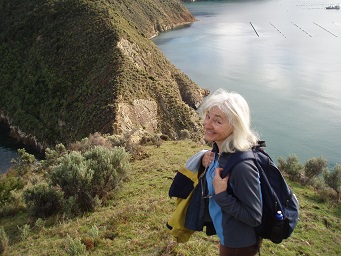 Rough stops so far: France, Spain, Portugal, Canaries ( where you kindly left us a copy of your book ), thence to Tobago, Trinidad, and cruise up the island chain – which was changed with the failure of the engine. I didn’t want to get caught in the hurricane belt by chancing a rebuild there so carried on without it – to the islands northward, the Bahamas and into Charleston, S Carolina. No easy cure was available so we sailed up the Gulf Stream to Chasapeake Bay. We were kindly taken under the wing of a small village and found somewhere to get the engine rebuilt. I could have easily done it myself but the prospect of getting spares from Europe into America was too daunting to contemplate. I took weeks and subsequently proved a very poor job.
Rough stops so far: France, Spain, Portugal, Canaries ( where you kindly left us a copy of your book ), thence to Tobago, Trinidad, and cruise up the island chain – which was changed with the failure of the engine. I didn’t want to get caught in the hurricane belt by chancing a rebuild there so carried on without it – to the islands northward, the Bahamas and into Charleston, S Carolina. No easy cure was available so we sailed up the Gulf Stream to Chasapeake Bay. We were kindly taken under the wing of a small village and found somewhere to get the engine rebuilt. I could have easily done it myself but the prospect of getting spares from Europe into America was too daunting to contemplate. I took weeks and subsequently proved a very poor job.
From there we went to Bermuda, the back down to the Caribbean to stop where we missed on the way North.
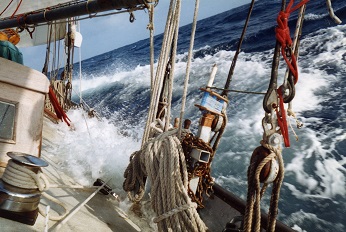
The Pacific was my aim from an early age and now we were on our way by way of Venezuela and Panama. We escaped the depredations of the villains in Panama and made atypically slow passage to Galapagos. The next ‚leg‘ was to the Marquesas – a good fast run (for ‚Irene) similar to our atlantic run under her running rig of two large headsails boomed out with 20 foot poles), two water sails under them and a pair of old top’sls from the top of the mizzen. The booms are ‚heeled‘ on the back of the anchor winch – this means that the wind can be carried far out on either quarter.
I left off at the Marquesas – a delightful cruise around most of the islands that ran into our ’schedule‘ to be out of the southern cyclone area. Rather than hurry across the pacific and not ’stop to smell the roses on the way‘ I decided to go North to Hawaii.
It was a slow, light weather passage of about 2000 miles – all on the Starboard tack. This diversion had the advantage of allowing us another ’season‘ in French Polynesia and a more leisurely cruise thence onwards. The return was even slower – but what is the problem with that when there is a well found, well stocked boat under you and all the time you need. By the way ‚Irene‘ has no ‚fridge, no freezer, no radar, no watermaker, no shower – and a long list of ’no’s‘ – but I have not had to buy them, or make the power to run them – nor has any of them had the chance to let me down.
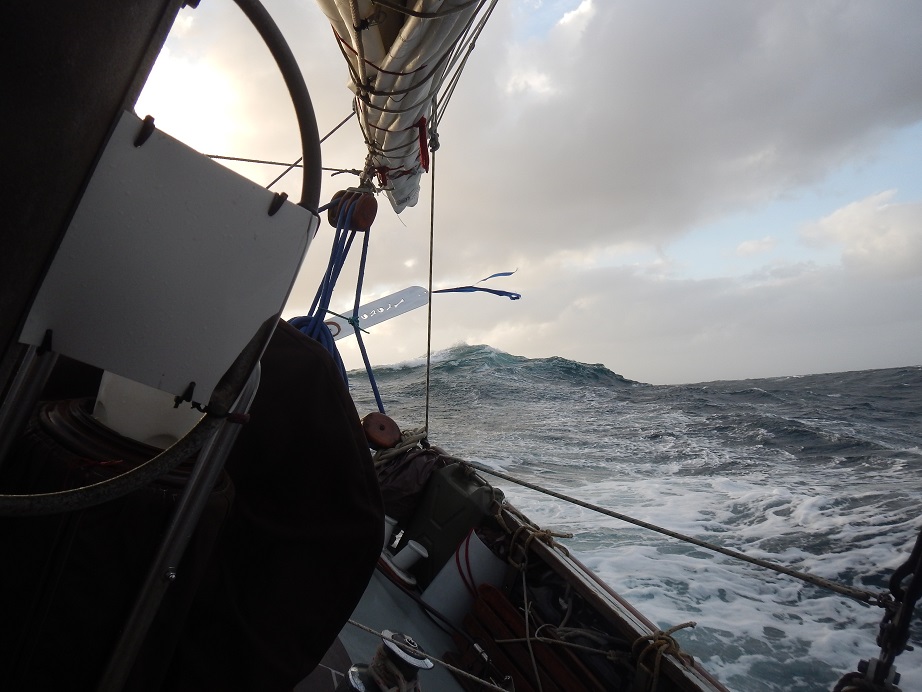
French Polynesia was, of course, a delight – particularly as we went to ‚unpopular‘ places and, generally had anchorages to ourselves. I would like to have gone to ‚Suwarrow‘ but it it was a very wind year thereabouts and there were two yachts on the reef and another in trouble.
The Cook’s were simple and nice and we stopped at Beveridge reef to anchor in th middle of nowhere.
By now we had another choice – hurry through Tonga, Fiji, New Caledonia and Vanu Atu and on to Australia OR cruise, at leisure, through Tonga and then go to NZ and make a separate cruise of the others.
Tonga was lovely but several places were overcrowded with yachts and we would find out where the were going and then have peace and quiet for ourselves.
Eventually it was time to go and we cleared for NZ. We have been very strict to enter and leave everywhere properly documented – there are plenty that don’t bother.
We arrived off NZ with clearing rain and escorted into a lovely green and pleasant Russell, Bay of Islands, by Dolphins. Our cruise to the Southward to spend our first winter out of the tropics for some years boded a cold winter – with a well earned refit for ‚Irene‘ in a strange port – to be carried out by ourselves as cheaply as was consistent with our very slender budget.
A slow wander Southerwards by way of some of the Sounds took us to Nelson – the ideal place to carry out a major refit – which went very well – and even the first threatened ‚winter‘ was no problem as Nelson has a micro climate of it’s own.
As soon as we could we left for a cruise of the Marlborough Sounds and the Abel Tasman region then back to Nelson to stock up for a cruise to the South – Fiordland and it’s sounds then to Stewart Island with stops down the West Coast and up the East Coast.
The next cruise was to Fiji, Vanu Atu and New Caledonia – all delightful – then down to the E.Coast of Australia to Tasmania – for a quick look – and ended up staying for a year! A single handed cruise to the Northwards took me, via the Bass strait ‚Furneaux Islands‘, to some of the higher islands within the Great Barrier Reef – but left out much so as to have another look on another cruise – and sailed back to NZ.
Most recent cruise was direct to Bundaberg and thence North through the reef islands previously missed out. As soon as the first Northerly was forecast we headed South to Tasmania – eventually spending over two years in those waters.
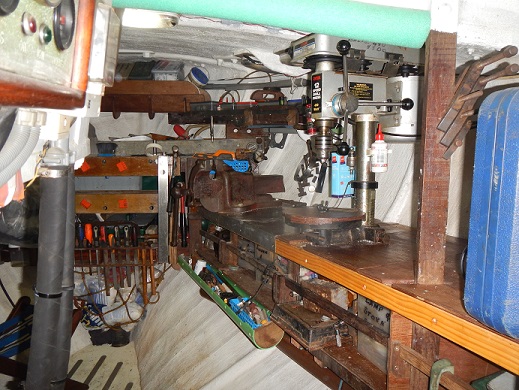
THE SIMPLE LIFE
you are so right – I don’t complain – I just like to encourage others to carry on with their ambitions – the greatest of which should be to live slower and better. It is a sad fact that the world is now so “excited“ that even relaxation must done as fast as possible! At high speed there is no time for the small simple ‚adventures‘ that a slower life abounds with – and we have been lucky to have had many of them. One of my favourites is that, when we first lay in Hobart, the local newspaper sent a reporter to us. We are both of the opinion that we should go quietly about the world and to hope that the world goes quietly about us – but I welcomed him with the offer of a beer – warning him that it would not be cold, (a sure way to frighten an Aussie), so he said had I problem with the ‚fridge – no I replied – no fridge. A little later he asked Pat how she managed without a ‚fridge. She simply said that when we got to a port we bought each other an ice cream. The following day, after the paper had been circulated, a lady we had never seen before came along the quay with two ice creams and said ‚When you have finished them come to dinner‘. We, of course, had them to dinner on board – such are our small adventures and they have left us with friends all along the way. We have time for people and they have time for us – it works well for all.
I feel strongly for your research into the low profile sailors and sailing and I lack whatever it takes to have done the same – so, please carry on with the good work and if I can encourage it in any way an email will find me. I will be looking at blog sites very soon – we have poor signals hereabouts but will soon have a ‚House Sit‘ with more signals and data to spare.
Encouragement in your endeavours
This comes with our regards and best wishes in all that you do.
From Both Pat and Dick aboard ‚Irene‘
Nelson, New Zealand





